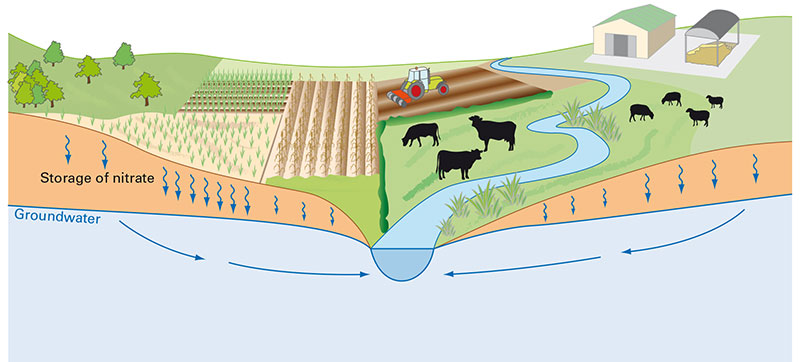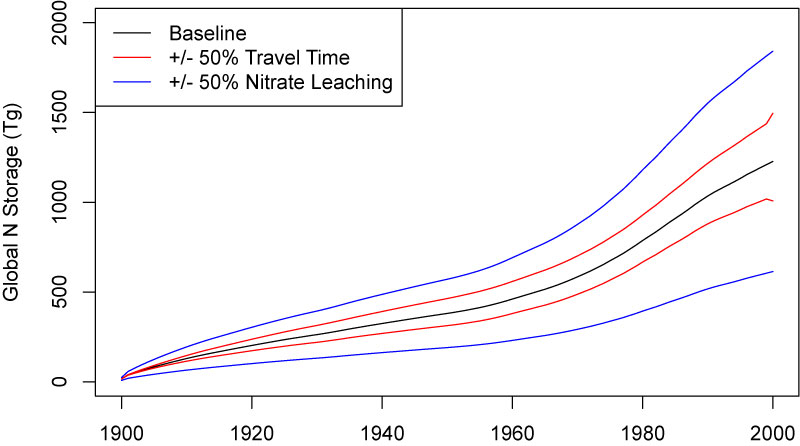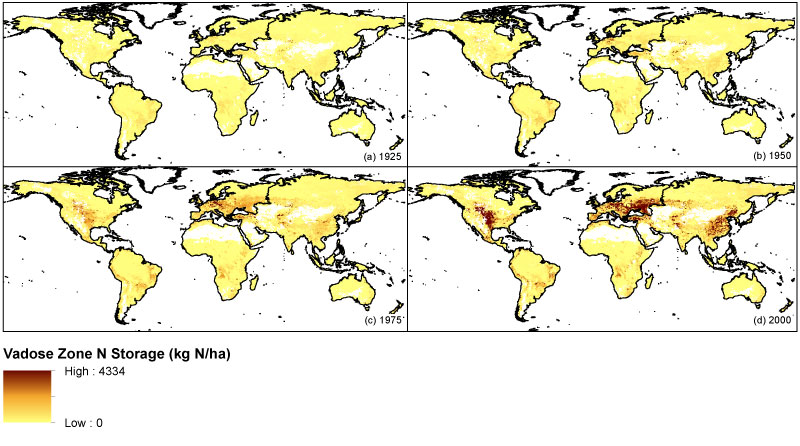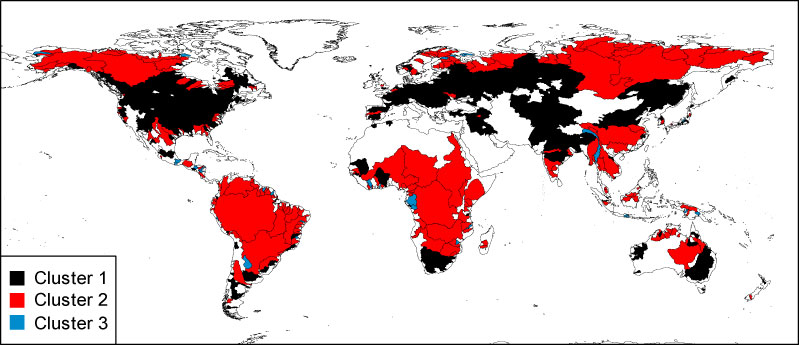Global patterns of nitrate storage in the unsaturated zone
The unsaturated (vadose) zone between the base of soils and the water table can be an important store of nitrate. Water moves slowly downward through the unsaturated zone and so a large store of nitrate can accumulate if this water contains nitrate derived from surface sources such as fertiliser. Release of this store can affect ground- and surface water quality for decades and it can continue for a long time after changes in farming practice that reduce nitrate leaching.
To better understand the extent of the problem, the BGS has made the first global-scale quantification of nitrate stored in the vadose zone between 1900 and 2000.
Increases in nitrate storage in the unsaturated zone though space and time
To estimate nitrate stored in the unsaturated zone, we linked mathematical models of nitrate leaching from the base of the soil zone with estimates of groundwater recharge, unsaturated-zone porosity and the depth to groundwater.
Our modelling showed a substantial continuous increase in nitrate stored in the unsaturated zone over the last century. The peak nitrate storage in 2000 was estimated to be up to 1814 teragrams (Tg) of nitrogen (N). This is equivalent to up to 200 per cent of the inorganic N stored in soils. Spatially, the unsaturated-zone nitrate storage is greatest in North America, China and central and eastern Europe, where the depth to water table is large and there is an extensive history of agricultural fertiliser use.
Nitrate storage patterns
To better understand trends in nitrate storage, we grouped the nitrate storage responses for river catchments across the globe. The groups show clear differences and trends, with a distinct split between developed (USA, Europe) and developing (Africa, East Asia) countries. In the developed group, current nitrate leaching into the unsaturated zone is decreasing, as a result of improved regulation and farming practice. In contrast, in the developing countries nitrate leaching shows continuous increases associated with rapid, early development and growing intensification of fertilised agriculture.
Implications for environmental policy
The large store of nitrate in the unsaturated zone means that the use of soil-nitrate leaching estimates alone as an indicator of nitrate pollution is likely to be inappropriate. The distribution of unsaturated-zone nitrate storage can give policy makers and decision makers a first global indication of where this store may be significant and where delays in improvements in groundwater and surface water quality can be expected. This is important for assessing the effectiveness of nitrate management measures and timescales for achieving environmental objectives.
The different nitrate storage characteristics observed highlight the need for different management strategies to tackle nitrate pollution across developing and developed countries. However, in both cases, it is essential that catchment retention processes, such as unsaturated-zone storage, are considered. Other temporary stores of nitrate such as storage in soil organic matter and in riparian zones also need to be quantified if fully integrated pollution-management strategies are to be developed.
Publication
The data developed in this research is now publicly available to download from the National Geoscience Data Centre: Matthew Ascott (2018): Gridded model estimates of nitrate-N stored in the vadose (unsaturated) zone at the global scale from 1900 to 2000. British Geological Survey. http://dx.doi.org/10.5285/800dd09b-5848-4803-a70c-cd15d5590f16
Ascott, M J, Gooddy, D C, Wang, L, Stuart, M E, Lewis, M A, and Binley, A M. 2017. Global patterns of nitrate storage in the vadose zone. Nature Communications. DOI: 10.1038/s41467-017-01321-w
Contact
Contact Matthew Ascott for more information.










